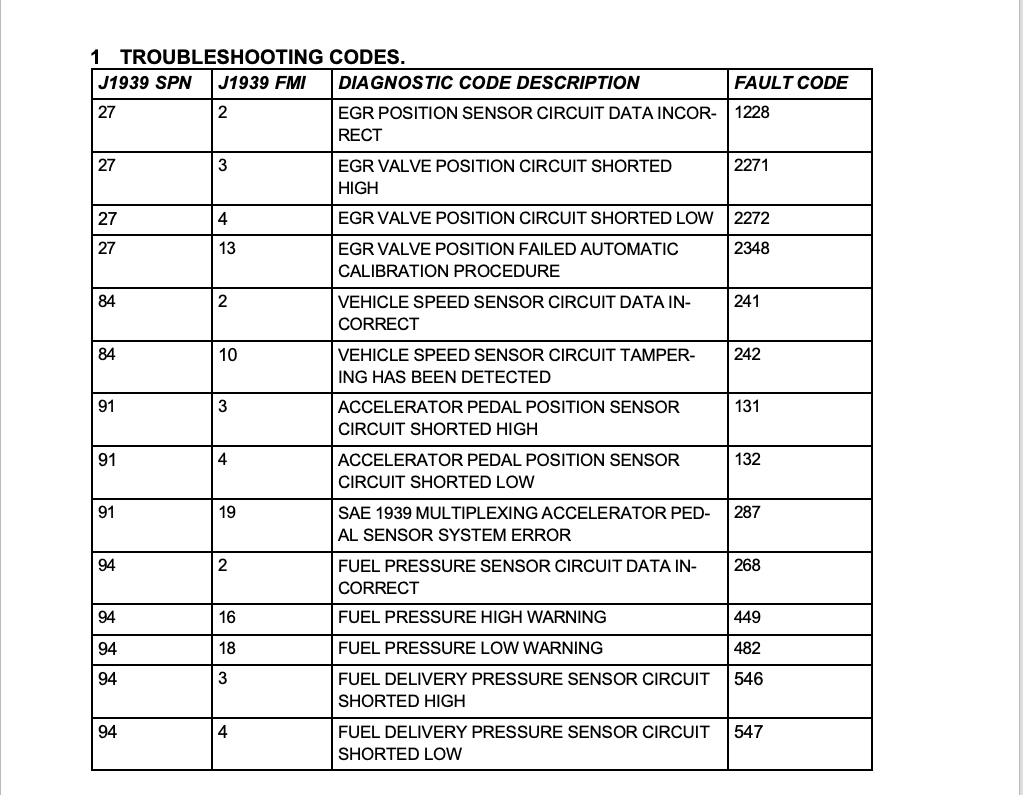The Complete Cummins Fault Code List
Cummins engines are renowned for their reliability and durability, but even the best engine can develop faults. Cummins fault codes indicate a malfunction has occurred in one or more of the vehicle’s components. Knowing Cummins fault codes is essential to diagnosing and fixing any problems with your Cummins engine quickly and efficiently. This article will provide an overview of Cummins fault code list reports and offer troubleshooting tips on how to interpret them so you can quickly and easily identify the root cause of any issue quickly and easily.
How to Check Cummins Fault Codes
The best way to check Cummins fault codes is with a diagnostic scanner. We often recommend Jaltest to our clients using Cummins.
Jaltest has expert technicians developing comprehensive, up-to-date coverage of Cummins systems, with 3 software updates per year free of charge.
Jaltest can read fault codes, help with troubleshooting, provide live data monitoring, enable predictive maintenance practices, and much more. Jaltest is a valuable tool for heavy-duty truck diagnostics.
Cummins Models Covered by Jaltest in 2025
These are just some of the Cummins CV models covered by Jaltest Diagnostics:
B SERIES
D SERIES
F SERIES
L SERIES
M SERIES
R SERIES
X SERIES
Z SERIES
The Complete Cummins Fault Code List (2025 Update)
Here are some of the most common Cummins Fault Codes we see on the job:
Fault Code 2962: EGR TEMPERATURE - ABOVE NORMAL MODERATELY SEVERE
Fault Code 212: ENGINE OIL TEMP SENSOR CIRCUIT - SHORTED HIGH
Fault Code 343: ECM WARNING INTERNAL HARDWARE FAILURE
Fault Code 259: FUEL SHUTOFF VALVE CIRCUIT STUCK OPEN
Fault Code 426: SAE J1939 DATALINK - CANNOT TRANSMIT
Fault Code 778: SECONDARY ENGINE SPEED SENSOR ERROR
Fault Code 2313: FUELING ACTUATOR #2 CIRCUIT ERROR
Fault Code 284: EPS SENSOR #1 (CRANKSHAFT) SUPPLY VOLTAGE - SHORTED LOW
Fault Code 486: INJECTOR METERING RAIL PRESSURE LOW- WARNING
Fault Code 2372: FUEL FILTER RESTRICTION MODERATELY HIGH - WARNING
Below is a complete list of Cummins fault codes. The first column of the following chart indicates the Suspect Parameter Number (SPN). The second column shows Fault Mode Identifier (FMI) numbers. Followed by a description and then the code itself.
Check out these videos for additional Cummins training
Best Practices for Maintaining your Cummins Engine in Top Condition
Learn Cummins Fault Codes: To begin with, it's important to become familiar with Cummins fault codes, their meanings, and how to interpret Cummins fault code list reports. As mentioned earlier, Cummins fault codes indicate a malfunction has occurred in one or more of the engine's components. Becoming familiar with Cummins fault codes is essential for diagnosing and fixing any problems quickly and efficiently.
Be Mindful of Wear & Tear: Regularly checking your Cummins engine for signs of wear and tear is also important. Make sure to check fuel injectors, hoses, spark plugs, air filters, oil levels, coolant levels, and other components for any abnormalities.
Review the Cummins Engine’s Service History: it’s essential to keep track of the Cummins engine’s service history and to follow the suggested maintenance schedule outlined by Cummins. Doing so will help you catch and prevent potential problems before they become serious.
In conclusion, Cummins fault codes are essential for diagnosing and fixing any problems quickly and efficiently. It’s important to become familiar with cummings fault codes, their meanings, and how to interpret Cummins fault code list reports in order to identify the root cause of any issue. Additionally, it is important to keep track of your Cummins engine's service history and follow a suggested maintenance schedule outlined by cummings in order to catch potential problems before they become serious issues. By following these best practices for maintaining your cummings engine in top condition, you can ensure that your vehicle runs smoothly at all times!
Looking for more personalized Cummins INSITE & QSOL training? Find out about our Cummins course, where we help expand technicians’ diagnostic skills and capabilities

